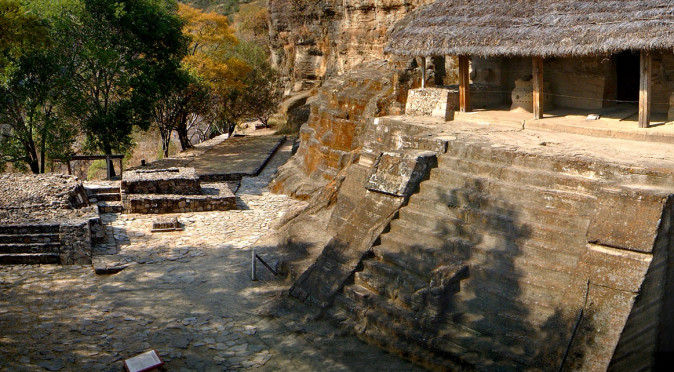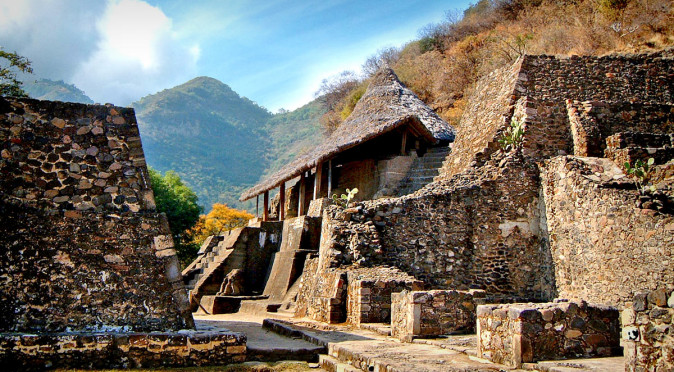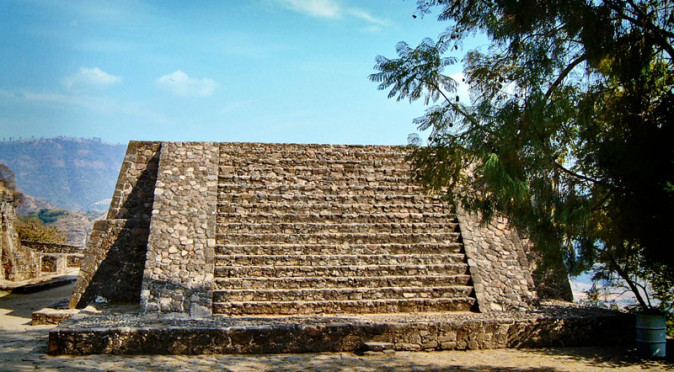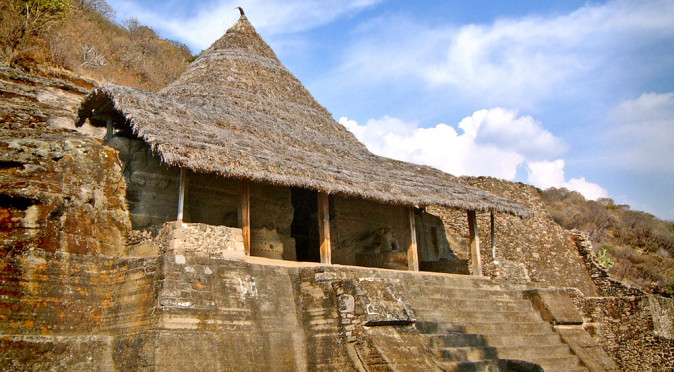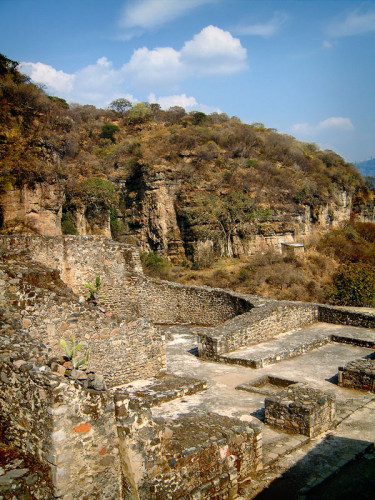
Structure IIIStructure III at the site of Cuauhtinchan, Malinalco, is immediately east of Structure I and is actually quite similar in floor plan to that of the Cuauhcalli, with a long rectangular section, similar to the patio of the Cuauhcalli, backed by a circular enclosure. The rectangular section of Structure III is clearly an enclosure that was roofed with three doorways opening to the south – these are defined by the remains of two pillars. Inside the rectangular enclosure is an extremely low bench, that appears too low to have been intended for seating. In the middle of the rectangular enclosure is a square altar pit in which offering could be made, which demonstrates that this hall was also an active part of the temple and not purely a entrance. The in circular temple also has a sunken altar pit which are flanked by the remains of columns which once held the roof.
Garcia Payon discovered a mural painting in the rectangular part of the building whilst excavating in the 1930s. Unfortunately it was destroyed almost as quickly as it was uncovered, but not before a sketch was made. The mural depicted a precession of three warriors holding shields and spears and wearing ritual attire. Whilst the warriors are presumed to have been Eagle or Jaguar Warriors, to remain in keeping with Payon’s assumption that the entire site was dedicated to these elite warriors, an alternative theory suggests these might be Toltec warriors, who the Aztec revered and wished to emulate. Either way, Temple III appears to be linked to warriors in battle. Temple III is also aligned to the cardinal points, with the rectangular section running east-west and the doorways facing true south. Excavation also revealed an older building buried beneath Structure III, which as yet is the only evidence of there being a ceremonial complex here before the Aztec began building theirs. Payon’s team also discovered a flint knife cached vertically, about a foot beneath the floor of the circular enclosure, which also demonstrates the structure’s importance.

